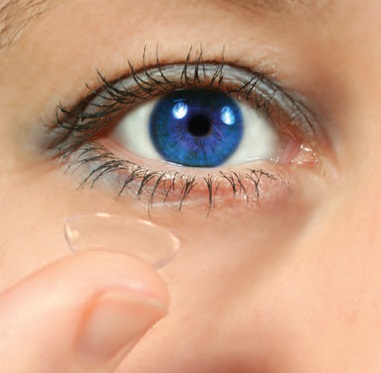Sliding on cells
Drs. Wilfred T. Tysoe & Nicholas D. Spencer | TLT Cutting Edge August 2010
Friction measurements on single cells may provide insights into cell-membrane behavior.

There are numerous reports that cells react biochemically to mechanical influences—a fact that could be of potential relevance in contact lens use.
www.canstockphoto.com
There are many medical devices such as stents, contact lenses and catheters where the sliding of cells against man-made materials is important. Additionally, there is also growing evidence that a number of disease states may be reflected in changes in the measured mechanical properties of cells, including frictional response. This opens the possibility that such measurements could be used diagnostically. Moreover, there are numerous reports that cells react biochemically to mechanical influences—a fact that could be of potential relevance in contact lens use.
In a previous column (
1), we reported on work by professor Greg Sawyer’s group at the University of Florida where tribometer measurements were used to determine the friction coefficients of various materials sliding on aortic endothelial cells (
2).
In a recent study at the same institution, professor Scott Perry’s group has measured and analyzed, in collaboration with Sawyer, friction on single corneal epithelial cells in culture medium by means of an atomic force microscope (AFM), incorporating a spherical, colloidal silica tip (
3). The paper is significant for a number of reasons. By using a local-probe method such as AFM, they are able to distinguish the intrinsic behavior of the outer surface of the cell from the collective behavior of a cell layer. This provides mechanical data that could be directly related to the environment of the individual cell in terms of physiology, disease or drug stimuli.
From a mechanical-engineering standpoint, the paper raises an interesting issue concerning tribological measurements of soft systems such as cells. By employing an elastic foundation (“bed of springs”) model rather than the conventional Hertz-Sneddon approach, the authors were able to extract the load-dependent shear stress at the cell-probe interface.
This interface includes the membrane components, the transmembrane proteins and the proteins adsorbed from the cell-culture medium onto the probe tip. The shear stress is the consequence of the friction and the stimulus to which the cell can react biochemically. The ability to measure this for a living cell potentially opens up a new area of tribological-biochemical investigations.
The Hertz-Sneddon model makes numerous assumptions such as a flat, non-frictional contact, infinitesimal deformation, infinite sample thickness and isotropic properties and is, therefore, less suitable than a model that takes a more realistic approach to cell-material interactions.
A demonstration that the elastic-foundation approach seems to work for the cells investigated by the Florida groups is that the AFM indentation behavior of the cells can be very well fitted by the model. It is interesting to note that an elastic-foundation model predicts a significantly higher (by a factor of five) elastic modulus than that predicted by the Hertz-Sneddon model.
Tribological investigations are sensitive to many mechanical properties and chemical effects. As such they provide a valuable window onto the way in which biological systems react to the stresses of the outside world. The challenges, as these authors have shown, lie both in the measurements and in the data analysis.
FOR FURTHER READING:
1.
Tysoe, W.T. and Spencer, N.D. (2007), “Fenders and Stents,” TLT, 63(8), p. 80.
2.
Dunn, A.C., Zaveri, T.D., Keselowsky, B.G. and Sawyer, W.G. (2007), “Macroscropic Friction Coefficient Measurements on Living Endothelial Cells,”
Tribology Letters,
27(2), pp. 233-238.
3.
Straehla, J.P., Limpoco, F.T., Dolgova, N.V., Keselovsky, B.G., Sawyer, W. G. and Perry, S.S. (2010), “Nanomechanical Probes of Single Corneal Epithelial Cells: Shear Stress and Elastic Modulus,”
Tribology Letters,
38(2), pp. 107-113.
 Eddy Tysoe is a Distinguished Professor of Physical Chemistry at the University of Wisconsin-Milwaukee. You can reach him at wtt@uwm.edu
Eddy Tysoe is a Distinguished Professor of Physical Chemistry at the University of Wisconsin-Milwaukee. You can reach him at wtt@uwm.edu.
 Nic Spencer is professor of surface science and technology at the ETH Zurich, Switzerland. Both serve as editors-in-chief of STLE-affiliated Tribology Letters journal. You can reach him at nspencer@ethz.ch
Nic Spencer is professor of surface science and technology at the ETH Zurich, Switzerland. Both serve as editors-in-chief of STLE-affiliated Tribology Letters journal. You can reach him at nspencer@ethz.ch.